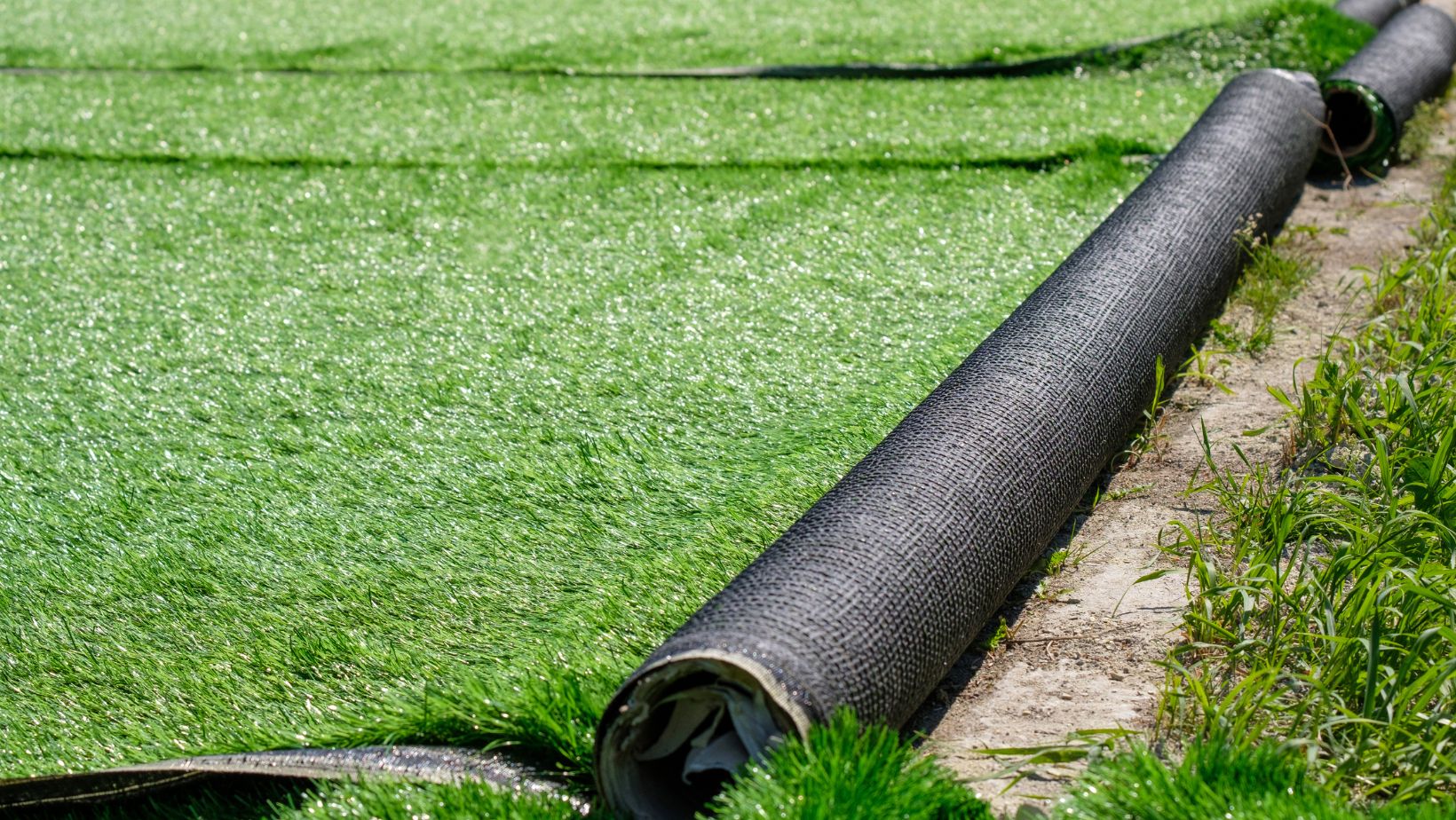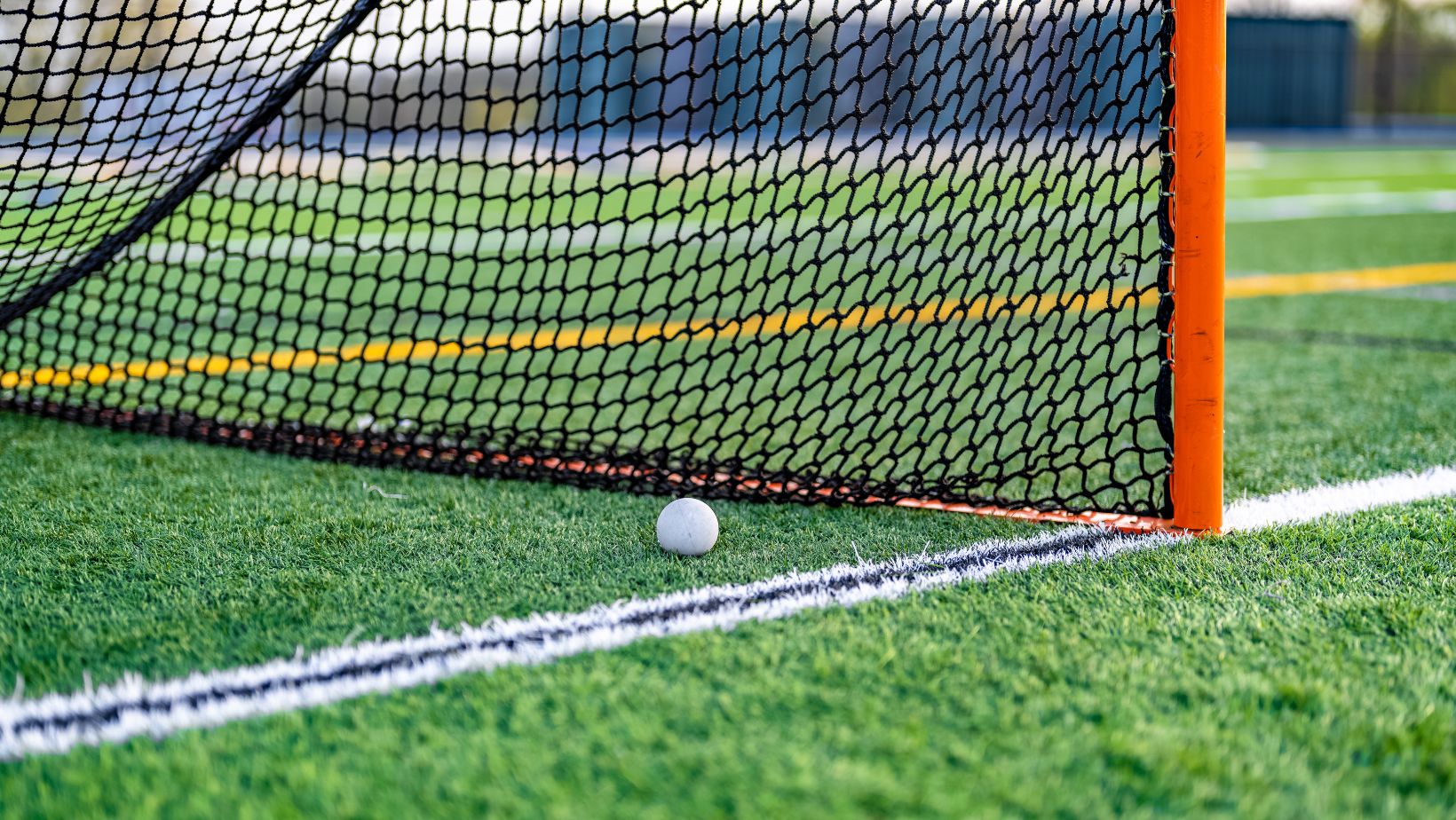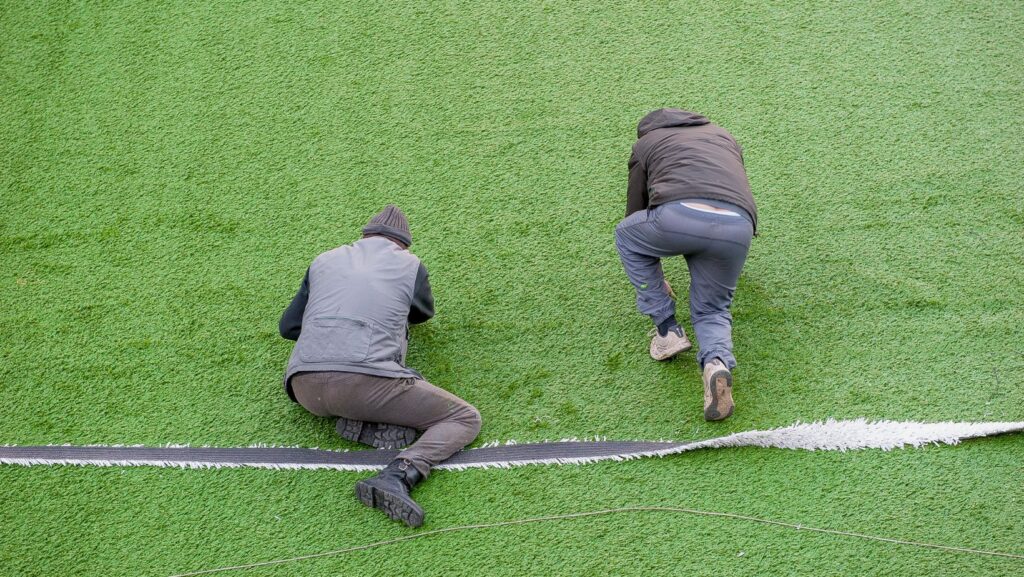Creating safe, sustainable, and long-lasting playgrounds for children is a top priority for schools, parks, and recreational facilities. As environmental concerns rise, many are turning to synthetic grass as an eco-friendly, low-maintenance alternative to traditional playground surfaces. In this article, we explore why synthetic turf is becoming the preferred option for playgrounds, focusing on its numerous benefits related to safety, durability, environmental impact, and cost-effectiveness.
Synthetic turf is an artificial grass surface made from durable synthetic fibers designed to resemble natural grass. It’s commonly used in sports fields, landscaping, and, more recently, in playgrounds. Made from materials like polyethylene, polypropylene, or nylon, it offers the aesthetic appeal of grass without the constant upkeep required by natural lawns. Synthetic turf is now recognized for its ability to provide a safer, more sustainable option for outdoor play areas.
Contents
Table of Contents
ToggleWhy Synthetic Turf? Key Environmental Benefits
Switching to synthetic grass for playgrounds brings significant environmental advantages. Traditional playground surfaces like natural grass require regular maintenance, including mowing, fertilizing, and watering. These practices consume large amounts of water and fuel, and often rely on harmful chemicals that can damage the ecosystem. In contrast, opting for a synthetic turf playground eliminates these needs, offering a more eco-friendly solution by reducing water consumption and minimizing the use of chemicals.
In contrast, synthetic turf offers an eco-friendly solution by eliminating the need for these maintenance practices, leading to a variety of positive outcomes:
- Water Conservation: Unlike natural grass, synthetic grass doesn’t require regular watering. In regions facing water shortages, this can make a significant difference in conserving precious resources.
- Reduction in Chemicals: Traditional lawns need fertilizers, pesticides, and herbicides, which can leach into the soil and water systems. Synthetic grass eliminates this need, helping reduce the environmental impact.
- Lower Carbon Footprint: The need for lawnmowers, which run on gasoline, is also eradicated. Synthetic grass helps lower greenhouse gas emissions, contributing to a cleaner, healthier environment.
Creating a Safer Playground: The Safety and Durability of Synthetic Turf
Safety is paramount in playground design, and synthetic grass excels in providing a soft and cushioned surface that reduces the risk of injury. Unlike hard surfaces like concrete or asphalt, synthetic grass offers shock absorption, making it a safer option for children at play.
Shock Absorption and Slip Resistance
One of the key benefits of synthetic grass is its ability to absorb impact. The soft, cushioned surface can minimize the severity of falls, reducing the likelihood of injury. Additionally, synthetic turf remains slip-resistant, even in wet conditions, providing a safer play area compared to natural materials like wood chips or sand that can become slippery when wet.
Long-Lasting Durability
Synthetic grass is designed to withstand high levels of foot traffic, making it ideal for playgrounds that are constantly in use. It maintains its shape and functionality over time, unlike natural grass that can become worn out or patchy with heavy use. Synthetic grass remains intact even in the most extreme weather conditions, whether it’s a scorching summer or a rainy winter. It’s an investment that ensures playgrounds remain functional year-round, with minimal upkeep.
Cost-Effective and Low Maintenance
While the initial cost of installing synthetic grass might be higher than laying down natural sod, the long-term savings are substantial. Traditional playground surfaces like natural grass require ongoing care, such as watering, mowing, and fertilizing. These expenses can add up quickly. Synthetic grass requires little to no maintenance, saving money in the long run.
Maintenance Savings
With synthetic grass, there’s no need for lawn mowing, weeding, or fertilizing. Routine cleaning is minimal, requiring only occasional sweeping or hosing down to remove debris.

This reduces the labor and resources spent on maintenance, making it a more cost-effective solution for playgrounds.
Durability for Long-Term Savings
Synthetic grass is durable and can last for years, even under heavy use. It can withstand all weather conditions without fading or breaking down, unlike natural grass that often needs to be replaced or repaired due to wear and tear. The low-maintenance nature of synthetic grass results in long-term savings, making it an economically sound choice.
Aesthetics and Year-Round Appeal
One of the primary advantages of synthetic grass is its consistent appearance throughout the year. Unlike natural grass, which can become patchy, brown, or muddy depending on the season or weather conditions, synthetic turf stays lush and green year-round. This makes it visually appealing for playgrounds, contributing to an inviting atmosphere for children to play.
No More Brown Spots
Natural grass can be susceptible to damage from foot traffic, weather, or pests, leaving unsightly brown patches. Synthetic grass, however, maintains its pristine appearance and doesn’t become bare or patchy, ensuring that the playground always looks neat and well-maintained.
The Installation Process
Installing synthetic grass on a playground is a straightforward process that requires professional expertise to ensure the best results. While installation may seem complex, the benefits far outweigh the initial investment in time and effort.
Here’s a general overview of the installation process:
- Site Preparation: The first step involves clearing the existing area of grass, rocks, and debris. The surface is leveled to ensure proper drainage.
- Base Layer Installation: A solid base layer of crushed stone or gravel is laid down to create a firm foundation and facilitate water drainage.
- Turf Installation: Synthetic grass is rolled out and carefully fitted over the base layer. The edges are secured, and any seams are carefully joined to ensure a seamless look.
- Infill Material: An infill material such as sand or rubber is applied to the turf to add weight, improve stability, and enhance cushioning.
- Final Adjustments: The turf is brushed and cleaned to remove any debris, ensuring it’s ready for use.
Addressing Common Concerns About Synthetic Grass
While the advantages of synthetic grass are clear, some people may have concerns about its use on playgrounds. Let’s address a few of the most common concerns:
- Heat Retention: One concern with synthetic turf is that it can get quite hot when exposed to direct sunlight. However, modern synthetic grass products come with heat-reflective technology that helps reduce heat buildup, making them more comfortable to play on even in hot weather.
- Environmental Impact of Manufacturing: While synthetic grass does require raw materials and energy for production, many manufacturers now use recycled materials in the production process. Additionally, some products are designed to be recyclable at the end of their lifespan, making them a more sustainable choice overall.
- Initial Cost: The initial installation cost of synthetic grass is higher than that of natural grass, but the long-term savings in maintenance and repairs make it a more cost-effective choice over time.
Sustainability and Eco-Friendly Materials
One of the main reasons for the growing popularity of synthetic grass is its potential for sustainability. Many companies are now producing synthetic turf made from recycled materials, reducing the demand for virgin resources. Furthermore, the turf’s long lifespan means that it doesn’t need to be replaced frequently, reducing the overall environmental impact.
Many manufacturers are also committed to ensuring that their products can be recycled at the end of their life cycle. This contributes to a circular economy, reducing waste and minimizing the environmental footprint.
Conclusion: An Investment in Safety, Sustainability, and Cost Savings
Switching to synthetic grass for playgrounds is an investment that brings numerous benefits. From its positive environmental impact to its safety features, durability, and low maintenance, synthetic grass is quickly becoming the surface of choice for modern playgrounds. Whether you’re building a playground for a school, park, or recreational facility, synthetic grass provides a sustainable, safe, and cost-effective solution.

With its ability to withstand heavy use, harsh weather conditions, and the test of time, synthetic grass ensures that playgrounds remain safe, visually appealing, and functional for years to come. If you’re looking to create a playground that balances aesthetics, safety, and sustainability, consider making the switch to synthetic grass today.

